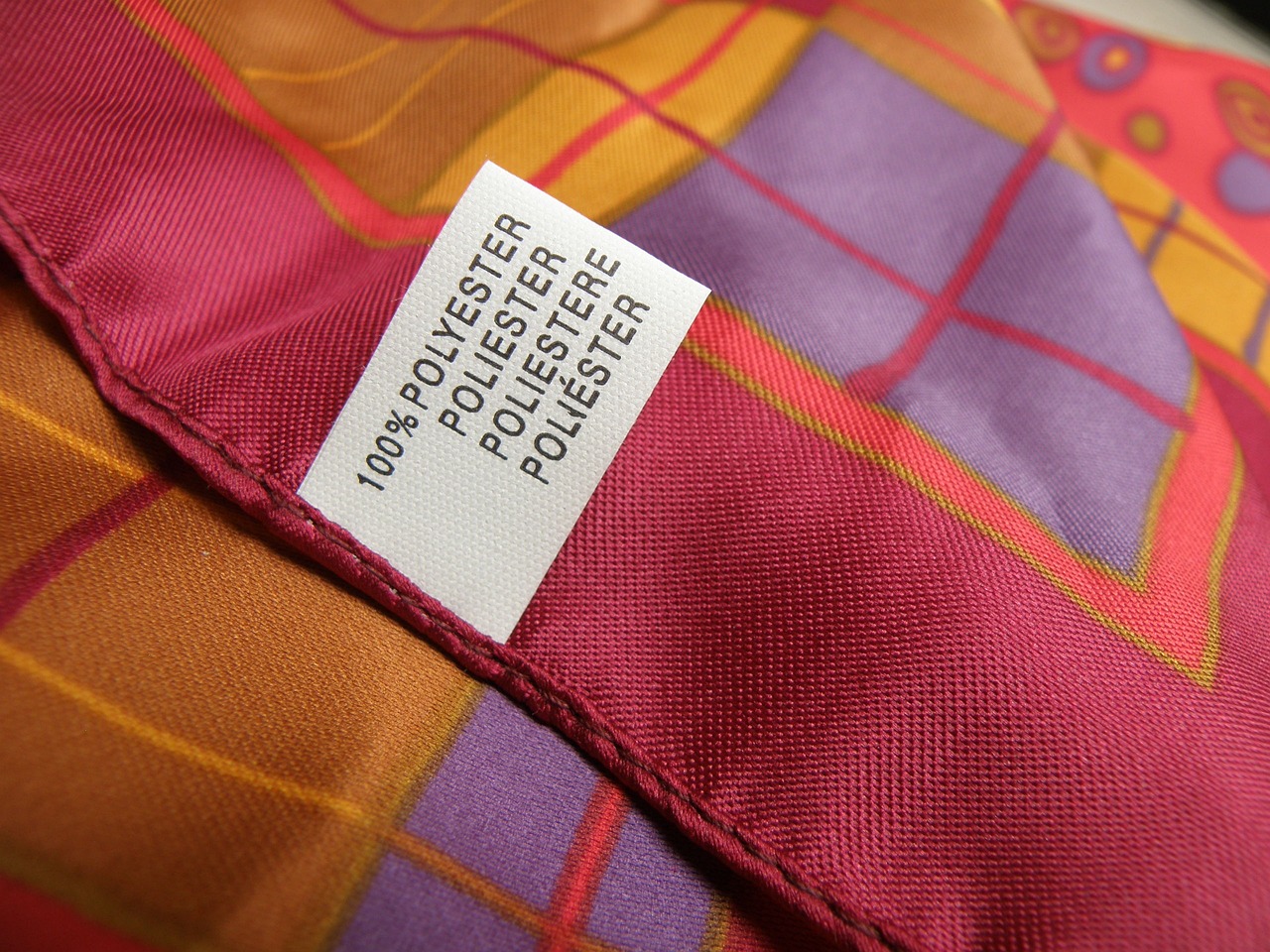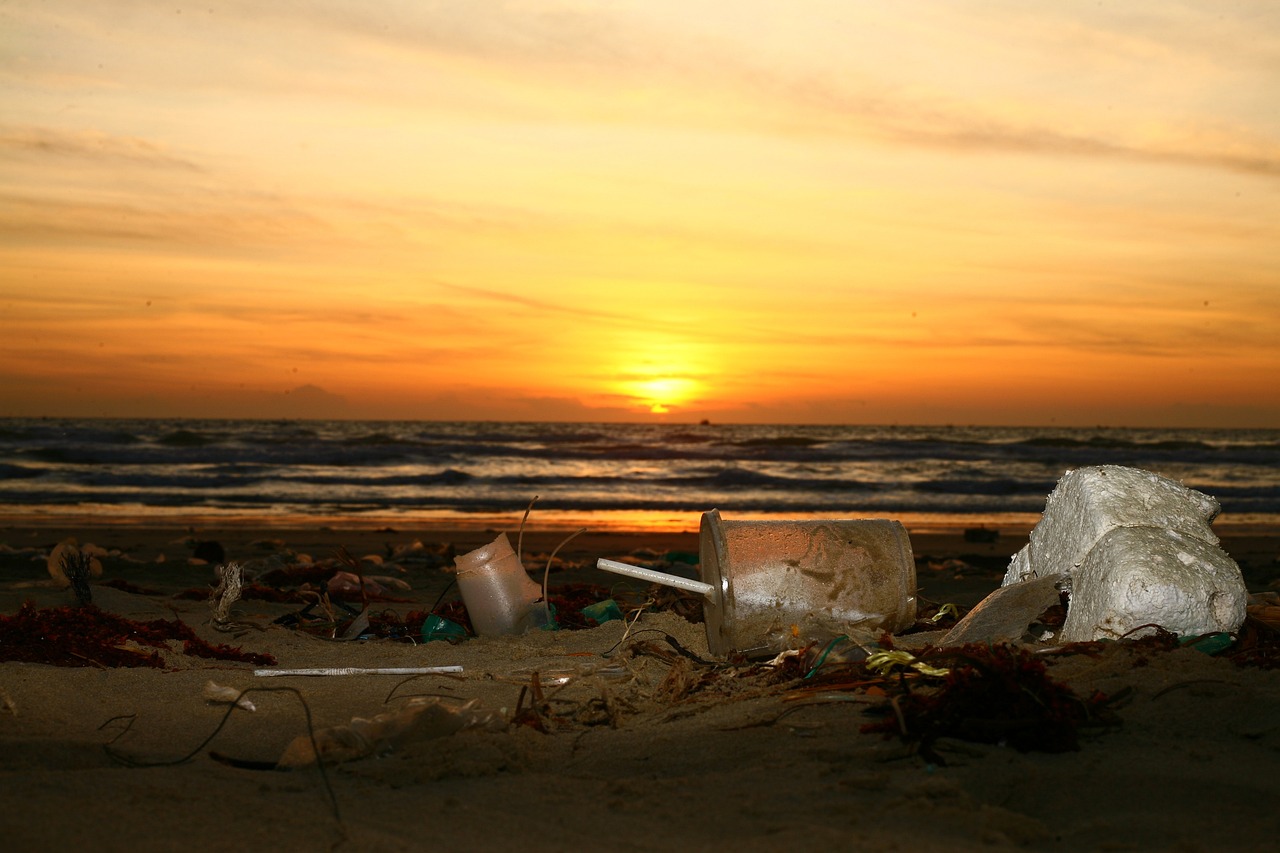Contrary to popular thought, microplastic contamination in the ocean doesn’t all come from plastic bottles
Some of the links in this post are affiliate links. This means if you click on the link and purchase an item, I will receive an affiliate commission at no extra cost to you. All opinions are my own.
Plastic bottles and plastic recycling release microplastics into the environment
You may already know that plastic water bottles leach small amounts of microplastics into water bottles. You may not know that the process of recycling of plastic products can also release microplastics in the environment via wastewater, effluents, and sludge.
When microplastics are removed from wastewater, they end up in sludge, which is often returned to the environment. The larger the size of the microplastics, the easier it is to remove from wastewater. Generally, 50 to 99 percent of microplastics are removed from wastewater (but then end up back in the sludge and the environment).
But one source of microplastics doesn’t get enough attention: textiles.
Are you shopping online this week? Until December 1st, get $40 free towards your online purchase! Rakuten is an affiliate marketer that shares the referral bonus with you. Go to any of the hundreds of associated retailers, make the purchase you were going to make anyway, and get $40 refunded back to you via a check or PayPal.
There is no catch. It's just an account that gives you a percentage back on your everyday purchases. Watch the mail money pile up. It's distributed back to you quarterly. Plus, it helps this website stay up and running!
Textiles are one of the largest unregulated contributors to microplastics in the ocean
Microplastics, as defined by the National Oceanic and Atmospheric Administration (NOAA), are plastics smaller than 5 millimeters (mm) in size. The majority of microplastics fall into a subset called microfibers, which are fibrous plastics derived from the textile industry. One of the most common microfibers used today is polyethylene terephthalate (PET), or polyester, which is found in fleece and microfleece jackets. Both synthetic fibers, such as polyester, and nylon and non-synthetic fibers, such as cotton and wool are widely used in the garment industry. While non-synthetic fibers have been more prevalent in the textile industry historically, polyester has remained the most common material used in textiles since surpassing cotton in 2002. Synthetic fibers account for 60% of microfiber production in the world, and 90% of these synthetic microfibers are polyester.
Rakuten is the best holiday shopping companion. Until 12/1, make a purchase of $40 and get back $40 when you make an account. (It's usually $30).
I've been using it for 6 months and I've already received over $110 back for the purchases I made online. I bought nothing extra. These were purchases I was going to make anyway.
Unexpected contributors of microplastics in oceans
Some other sources of microplastic contamination include tires (via tire abrasion while driving on roads), plastic pellets (the building blocks for any plastic product), personal care products (think: microbeads in facial scrubs and toothpaste), and even face masks.
How do microplastics get into the environment through textiles?
Because washing machines do not typically filter effluent from wash cycles, microfibers shed from clothes during each wash are transported directly to wastewater treatment plants (WWTPs), along with other household waste. Extensive studies have explored microfiber shedding rates depending on material type, age and washing machine models and cycles. For example, when comparing various types of fibers, the authors of one study found that fleece and microfleece shed more microfibers per wash than clothing made of acrylic or polyamide. Not unexpectedly, older microfiber garments shed more fibers than newer garments, likely due to the weakening of fibers over time. Additionally, top-loading washers generate higher rates of shedding than front-loading washers, as shown in Figure 1, probably caused by the central agitator present in only top-loading washing machines. There are many variables to account for, but it is estimated that a microfiber jacket can lose anywhere from 100 to 1,900 fibers per wash, all of which end up in WWTP influent.
Tell me more about polyester clothing
A more recent study suggests that each polyester jacket can shed up to 250,000 synthetic microfibers each time it is run through the washing machine, not all of which are filtered during treatment. Concentrations of microfibers in WWTP effluent can be up to 25 times greater than that of seawater, signifying that WWTPs could be considered point sources of microfiber contamination in oceans. In addition, a study assessing worldwide microplastic contamination on shorelines found that the ratio of microplastics in WWTP effluent was similar to proportions found in nearby ocean waters (approximately 67% polyester and 17% acrylic.)
While attention on microfiber contamination derived from the textile industry has garnered popularity in recent years, microplastics of varying composition also derive from the biological, chemical, and mechanical breakdown of larger macroplastics. However, a study conducted in Sweden revealed that about 90% of microfibers found on the western coastal regions of the country were derived from textiles rather than macroplastics.

For simply creating an account, Rakuten gives you free money back for shopping and using their referral links. They share that referral commission with you. Get the best deal for everyday shopping now.
Aren’t microplastics regulated?
International efforts
There are currently no laws or regulations to specifically address microplastic or microfiber pollution in the ocean. However, there are several international and federal efforts to protect oceanic environments by removing suspended particulates and ban the manufacturing of some microplastics. The World Health Organization (WHO) acknowledges the persistence of suspended particulates in marine organisms, but detailed criteria have yet to be established to mitigate elevated concentrations. The European Union (EU) Marine Strategy Framework Directive (2008/56/EC) was also established to improve oceans around the EU by 2020, with the main objective of reducing marine litter to levels that do not have adverse effects on coastal and marine environments. While acknowledgement of microfiber contamination by the WHO and the EU demonstrates growing concern for emerging microfiber contamination, neither organization presents any specific actions that would be required to achieve desired concentrations of microfiber pollution.
US regulation
Under President Obama the United States recently passed the Microbead-Free Waters Act of 2015, banning the manufacturing of plastic microbeads by 2017 and their sale by 2018. Microbeads are often used in cosmetics and for industrial purposes and are composed of similar materials to microfibers. While this ban does not encompass the manufacturing or selling of microfibers derived from the textile industry, it may provide a potential pathway for additional legislation.
Interestingly, the act has allowed private citizens to sue plastic polluters, as happened in Texas in 2019. More on the related litigation here.
As the textile industry continues production of polyethylene and microfiber-based garments, the concentration of microfibers discharged to oceans will inevitably increase as well. Because legislation limiting the manufacturing or distribution of microfibers has not been developed, mitigation efforts should focus on point sources such as WWTP effluent. It is imperative that additional research be conducted to determine optimal microfiber removal methods prior to ocean discharge to limit adverse health effects on marine organisms.
Standard laboratory methods are still being developed to measure microplastics in the environment. You can keep up with the emerging science here or with other reputable newsletter resources.
And as always, let me know in the comments below if you have any questions!

